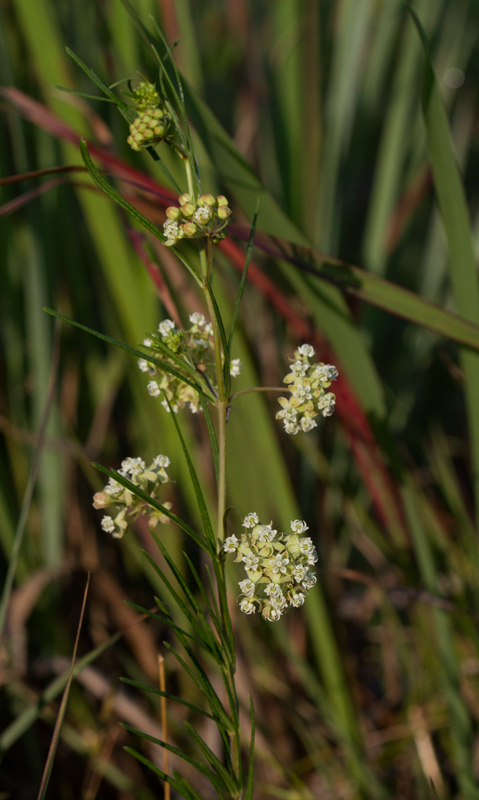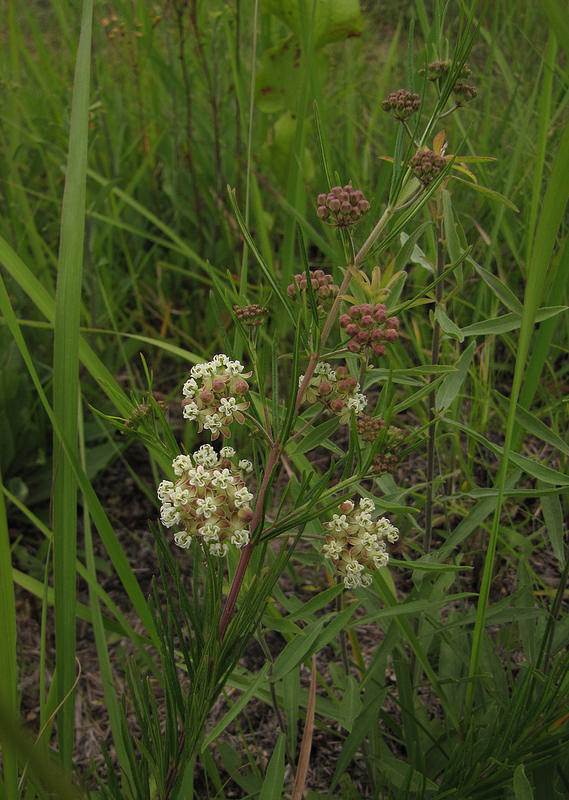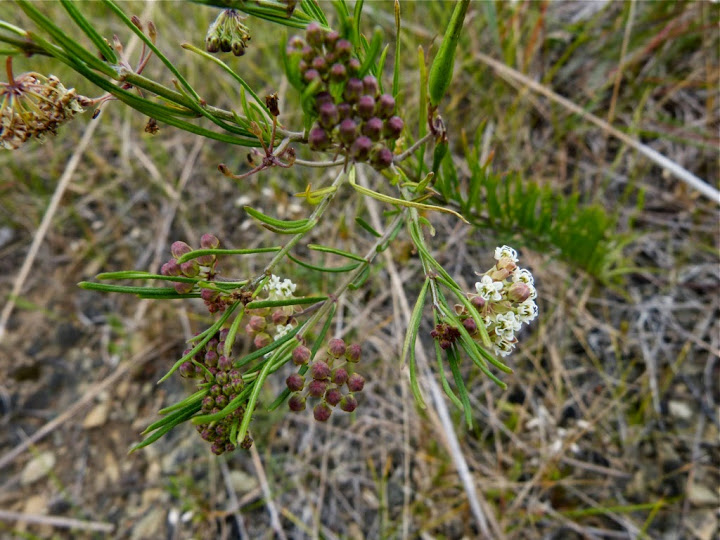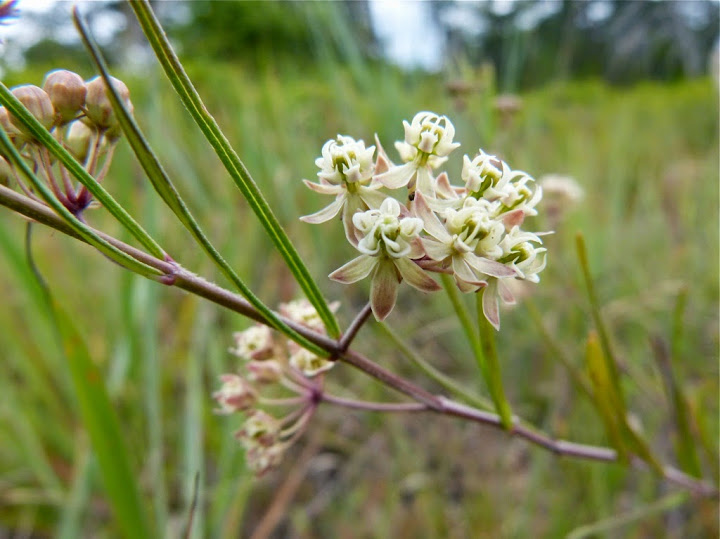Map Snapshot





















128 Records
Status
In Maryland, Whorled Milkweed is an uncommon plant that grows on the piedmont and Ridge and Valley. According to the MD Natural Heritage Program, Whorled Milkweed prefers, "a variety of dry, open-canopy barrens, thin-canopied woodlands and outcrops and over a variety of substrates ranging from acidic (dry sands) to mafic (limestone, shale) and ultramafic substrates (serpentine)." The MD Natural Heritage Program also states that the coastal plain populations of Whorled Milkweed probably relied on fire, and are now to be considered extirpated. Whorled Milkweed is tracked by the MD Natural Heritage Program, and is on the state watch list with a rank of S3.
Description
Whorled Milkweed looks like no other Maryland milkweed species. The leaves are linear and arranged in whorls along the stem. The flowers are smaller than most other milkweed species. They are arranged in clusters, whitish when mature, with reflexed corolla petals that are often tinged with purple/pink. The Maryland Biodiversity Project has blooming dates between 7/1 and 8/31.
Relationships
Monarch caterpillars are known to occasionally use Whorled Milkweed as a host plant.
Seasonality Snapshot
Source: Wikipedia
| Asclepias verticillata | |
|---|---|

| |
| Scientific classification | |
| Kingdom: | Plantae |
| Clade: | Tracheophytes |
| Clade: | Angiosperms |
| Clade: | Eudicots |
| Clade: | Asterids |
| Order: | Gentianales |
| Family: | Apocynaceae |
| Genus: | Asclepias |
| Species: | A. verticillata
|
| Binomial name | |
| Asclepias verticillata | |

Asclepias verticillata, the whorled milkweed, eastern whorled milkweed, or horsetail milkweed, is a species of milkweed native to most of eastern North America and parts of western Canada and the United States.[1]
Description
[edit]This is a perennial herb with a single stem 6 inches to 3 feet tall. The very narrow, linear leaves are arranged in whorls of 4–6 with short internodes. The inflorescence is an umbel of 7–20 greenish white flowers.[2][3] Flowers are fragrant and bloom between June and September. Its native habitats include glades, dry prairies, dry slopes, dry open woods, pastures, fields, and roadsides. The Latin specific epithet verticillata is in reference to the leaves appearing in whorls.[4]
Ecology
[edit]This species can reproduce vegetatively and does not depend on pollinators, but it does produce some nectar, mostly in the early evening hours. Insect visitors to the plant include wasps, honeybees, and lepidopterans such as moths and the cabbage white.[5] Like other milkweed species, this plant is a host plant for the monarch butterfly whose caterpillars feed on the leaves.
The plant is toxic to livestock.[3]
Uses
[edit]It was used as a medicinal plant by Native American peoples. The Choctaw used it to treat snakebite, the Lakota and Hopi used it to increase breast milk in nursing mothers, and the Navajo used it for nose and throat problems.[6]
References
[edit]- ^ "Asclepias verticillata". Germplasm Resources Information Network. Agricultural Research Service, United States Department of Agriculture. Retrieved 12 January 2018.
- ^ Hilty, John (2020). "Whorled Milkweed (Asclepias verticillata)". Illinois Wildflowers.
- ^ a b "Asclepias verticillata". Native Plant Database. Lady Bird Johnson Wildflower Center, University of Texas at Austin.
- ^ "Asclepias verticillata - Plant Finder". www.missouribotanicalgarden.org. Retrieved 2022-01-12.
- ^ Willson, M. F., et al. (1979). Nectar production and flower visitors of Asclepias verticillata. American Midland Naturalist 102(1) 23–35.
- ^ Asclepias verticillata. Native American Ethnobotany. University of Michigan, Dearborn.







